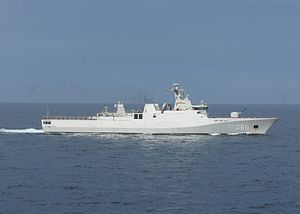Over the weekend, reports surfaced that the Indonesian legislature had agreed to a proposal to boost the country’s defense budget in order to fund new purchases following earlier cuts being mulled.
According to ANTARA News, Mahfudz Siddiq, the Chairman of Commission I of the House of Representatives (DPR), said on September 25 that he had agreed in principle to a proposal advanced by Defense Minister Ryamizard Ryacudu to increase the military budget by Rp37 trillion. Around Rp30 trillion of that amount, Siddiq said, would be used to purchase military equipment, with the rest going to other areas like troop welfare.
The development is not surprising. Indonesian legislators, including Siddiq himself, had expressed deep concern when it was revealed earlier this month that Indonesia may be cutting its 2016 defense budget (See: “Why is Indonesia Set to Cut its Military Budget for 2016?”). As I wrote then, some had expressed concerns that it might affect the purchase of important new hardware for Indonesia, including Su-35 jets and submarines from Russia (See: “Indonesia to Buy New Submarines from Russia”).
Indonesian defense officials, however, had indicated that efforts would be made to ensure that critical new equipment – especially for the navy and air force – would be prioritized despite the cuts. At an event at the U.S.-Indonesia Society (USINDO) earlier this month, the DPR’s Speaker Setya Nevanto had also told The Diplomat that officials were in the process of ensuring that “priority purchases” – including submarines, helicopters and planes – would not be affected. In this vein, the proposal to increase the budget and spend most of it on new equipment is an encouraging sign as it could mean fewer cuts for procurement.
More broadly, if the proposal ends up being passed by the DPR’s budget board, the 2016 defense budget would stand at Rp132.8 trillion, up from the Rp95.8 trillion allocated in the draft budget earlier this year. Beyond the amount itself, that new total figure is important because it would represent an increase, rather than a decrease in the 2015 military budget, which is over Rp102 trillion.
As I noted in an earlier piece, a decrease would have been seen as a severe blow to Indonesia’s military modernization efforts (See: “Why is Indonesia Set to Cut its Military Budget for 2016?”). As it is, despite being the world’s largest archipelagic state and its fourth most populous country, Indonesia has significantly underinvested in its military relative even to its much smaller Southeast Asian neighbors. Despite sharp increases in recent years, growing from 17 trillion in 2010 to 102.3 trillion in 2015, Indonesian defense spending as a percentage of GDP was the lowest in ASEAN at 0.8 percent in 2014, well below the regional average of 2.2 percent.
It would also have undermined the credibility of President Joko “Jokowi” Widodo’s ambitions for Indonesia. Jokowi had come into office pledging to increase Indonesia’s defense spending to 1.5 percent of GDP and even double the budget in 2016 as Indonesia seeks to develop a Minimum Essential Force by 2024 and serve as a global maritime fulcrum (See: (See: “Will Indonesia Double its Military Budget in 2016?”). While many – myself included – had been quite skeptical of Jokowi’s effort to double the budget given Indonesia’s economic troubles, a decrease – as opposed to just a smaller increase – would have severely dashed expectations of a significant boost to Indonesia’s defense capabilities.
































